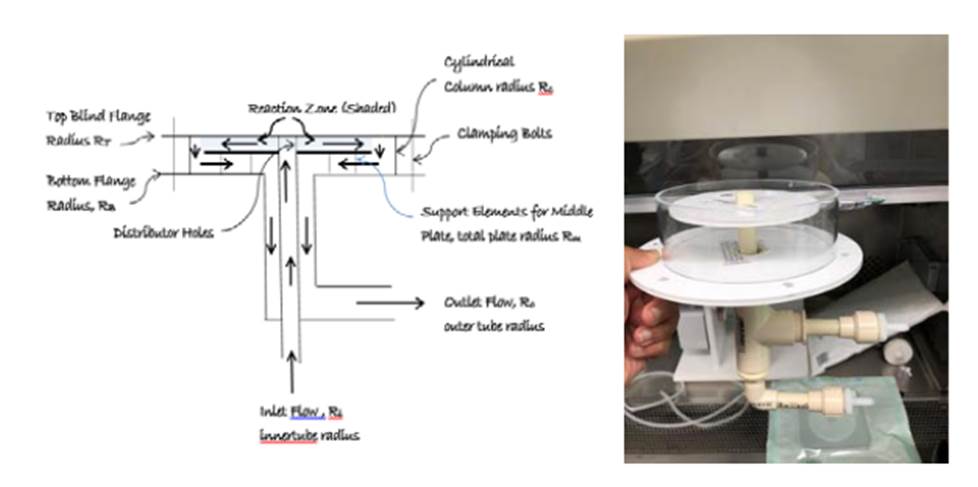Devices
Radial Flow Processing Device
Residence time compensating radial flow processing device
A Virginia Commonwealth University researcher has created a new design for a radial flow device. Current radial flow devices have moving parts such as an impeller which drive the fluid. However, as the part of the new design, this device does not have any moving parts and uses relatively low pressure driven flow. Benefits of this unique design include the optimization of radial flow characteristics for the enhancement of heat (energy) transfer, mass transfer, separations, biological reactions and systems, and small molecule reactions. Since this is a device, it can also be built using various materials including 3D printed materials which could lower the cost of production.
The technology
A new radial flow processing device is presented here. The radial system is characterized by what can be termed as “residence time compensation.” During “residence time compensation,” reaction or molecular transport rates, which typically decrease along a process path, are compensated by an accompanying increase in the local flow residence times due to the radial flow geometry of the device. The compensating effect of increasing residence time to decreasing rates for the radial flow device in general holds for various processing applications. These applications include energy transfer such as solar, mass transfer and separation processes, where the temperature/concentration gradients decrease along the path and are compensated by residence time increases. Biological and/or cellular growth reactions involving mammalian or bacterial cells are also well suited for this geometry. Semi‐permeable membranes can also be used at the inlet/outlet interface instead of thermal walls for mass transfer recycling, such as in an artificial kidney design, dialysis, and water purification.

Figure 1: Side view of the conceptual device, no moving part design.
